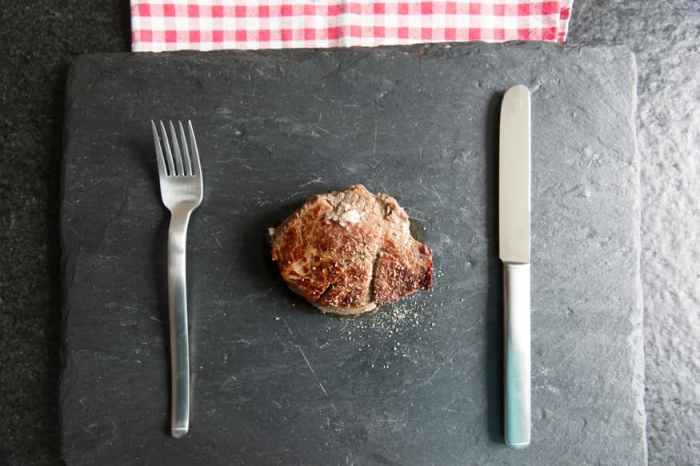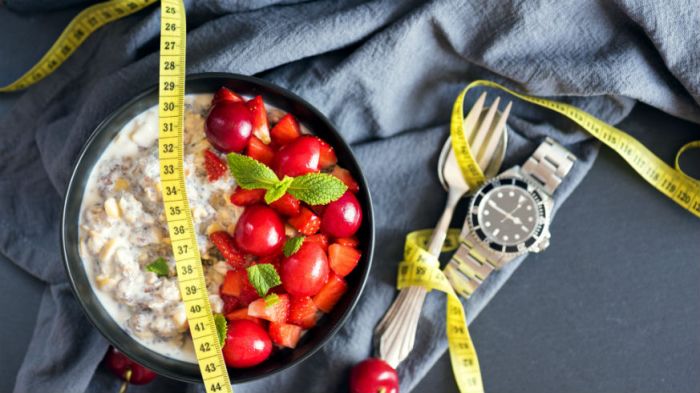Why is it that we treat diets like scarves when they’re really like jeans? There’s no one-size-fits-all diet. In fact, finding the right diet for you can be just as long of a process as finding the perfect pair of jeans because it’s all about what works best with your body. On your hunt, you’re sure to encounter some diets that sound reasonable, like the Scandi Sense Diet, and others that sound, well, extreme — like the Carnivore Diet (basically keto on steroids). So where does the Vertical Diet fall on the spectrum, and should you give it a try?
The Vertical Diet is the latest passed around the gym, with early adopters leaning heavily in the CrossFit arena and, most notably, Hafþór Björnsson, aka “The Mountain” from Game of Thrones. The plan is created by bodybuilder Stan Efferding, and if you can guess from the diet’s fans, it’s more about performance than aesthetics.
What is the Vertical Diet?
Efferding calls the Vertical Diet a “performance-based nutritional framework,” but unlike a lot of the plans you heard discussed in the locker room, this one takes the emphasis off of macronutrients (carbs, protein and fat) or calories and places it on micronutrients, like vitamins and minerals. Macros and calories do play a role, they’re just not the foundation of the plan.
The diet structure is new for even meal plan veterans. Efferding builds his nutritional plan in the shape of an upside-down T. The long part at the bottom is made up of the core foods emphasized on the plan for vitamins, minerals and antioxidants that are easily digestible and should increase gym performance. These foods are things like milk (if you’re not lactose intolerant), vegetables (always good), eggs, salmon and potatoes.
Sounds pretty sane so far and a solid plan for anyone logging time working out. The vertical part of the Vertical Diet is where this plan is tailored to a specific group of people with certain goals. This is where you build in your calories, which Efferding want you to do with rice and red meat. Ideally that’s in the form of steak, but he also taps venison, buffalo and lamb chops as options.
Is the Vertical Diet right for you?
First and foremost, it’s pretty clear that the plan isn’t optimal for vegetarians or vegans since they would be building out their calories with rice only. Although the site for Vertical Diet lists average men, women and children as good candidates for the diet, the larger part of the list includes people who have to be concerned about performance in the gym, like CrossFitters, bodybuilders and other aesthetic competitors, powerlifters and MMA fighters.
Still, if the diet sounds good to you, it has a solid nutritional base and a focus on whole foods, always a plus. The amount of rice and red meat you add into your daily intake will simply depend on your goals, whether that’s to see a boost in your weight lifting performance, shed fat while maintaining muscle, or simply to lose some weight. If you’re not a big fan of red meat, it’s probably not the best way to go for you.
The Vertical Diet does offer adaptations for a broad range of lifestyles, including people who like to eat high or low-carb, those who do intermittent fasting and even Paleo followers. You’ll have to shell out $100 for the 50-page PDF with the specifics — but you’ll also get a training program built into the cost — but it doesn’t look like those little indulgences you love like chocolate and wine make the plan.
You won’t find some standard foods that you think of as healthy on this plan, though. That’s not because they’re “bad” for you, but due to how they’re digested. The Vertical Diet is about “easily digestible macronutrients,” so you won’t find beans, brown rice or veggies like Brussels sprouts, broccoli or asparagus that contain large amounts of raffinose, a complex sugar that can cause gas and bloating.
The bottom line? If it sounds like something you can stick to, and you’re looking to up your performance, go for it. You’ll get plenty of protein and vegetables and your nutrients should be covered thanks to the foundation of whole foods. If you can’t live without your weekly Frappuccino, however, you might want to look into another plan, like If It Fits Your Macros (IIFYM).
























